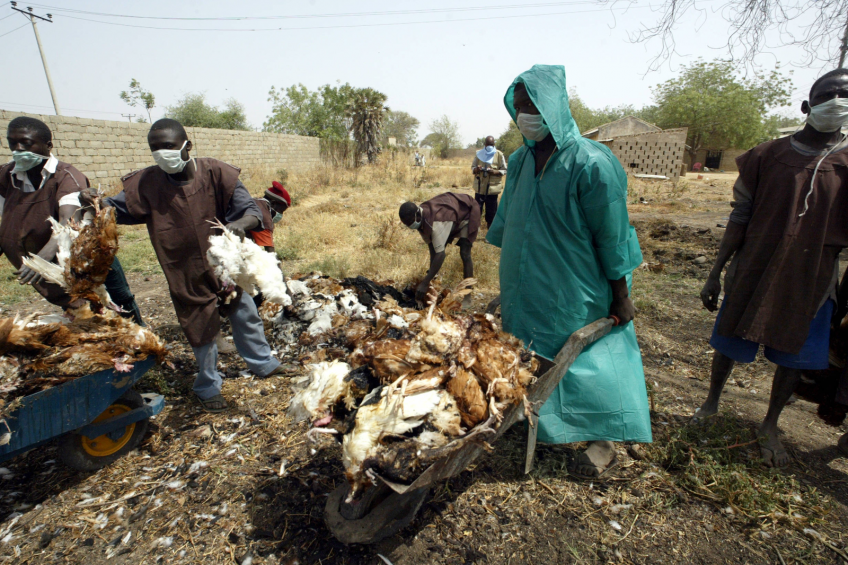FAO calls for $20 million to stop AI spread in Africa

Fears are growing that without timely intervention to stem outbreaks of the highly virulent avian flu virus H5N1 across West Africa, further spread across the region and beyond is inevitable, the Food and Agriculture Organisation of the United Nations (FAO) has said.
To this end, the agency is calling for $20 million for prevention and response activities.
Avian influenza outbreaks in African nations
The call follows outbreaks of the virus in poultry farms, markets and family holdings in Nigeria, Burkina Faso, Niger, Cote d’Ivoire and Ghana.
The outbreak comes as countries across West Africa are still recovering from, and in some cases still battling, Ebola. Avian flu could trigger a mass die-off of chicken – a nutritious and inexpensive source of food for many people– with detrimental impacts on diets and on the economy of the region, exacerbating an already difficult situation.
Death of 1.6 million birds
While the first incursion of the H5N1 in West Africa occurred in 2006 it was eliminated by 2008. In late 2014, however, the virus was re-introduced in Nigeria, where it spread rapidly in the following three months – to date more than 1.6 million birds have been culled or have died from the virus.
Because the disease can be transmitted to humans and is considered highly lethal, FAO is working closely with the World Health Organization on country assessments, contingency plans, offering technical assistance and investigating potential flu cases and the source of infection.
Assessment missions across Africa
FAO assessment missions to Benin, Cameroon, Mali and Togo – undertaken in collaboration with the World Organisation for Animal Health, the African Union, and in some cases with the World Bank – have not identified cases of H5N1 in poultry, but these countries and other countries in the Sub-Region need to ensure that prevention and preparedness measures are in place.
“Based on what we do know, there is a real risk of further virus spread. Urgent action is needed to strengthen veterinary investigation and reporting systems in the region and tackle the disease at the root, before there is a spillover to humans,” said Juan Lubroth, Chief
of FAO’s Animal Health Service Division.
Prevention and response
FAO’s appeal for $20 million for prevention and response foresees bolstering weak veterinary systems, improving the capabilities of local laboratories and putting FAO specialists on the ground in affected and at-risk countries. In the countries that have experienced outbreaks, response interventions include destruction of infected and exposed poultry, disinfection of premises and markets and the safe disposal of dead birds.
Veterinary officers, meanwhile, are encouraged to use basic techniques like “trace-forward” – which looks at where infected animals have been sold or moved to – and “trace backward” – examining where infected animals were purchased or where they came from – to find sources with the ultimate goal of halting continuous virus introduction or further spread.
Challenges to vaccination strategy
Although quality vaccines are available, the vaccination strategy to be implemented poses certain challenges in some countries and there is always a risk of creating a false sense of security by assuming that the administration of a dose of vaccine will resolve all threats. Instead, behavioural changes – including enhanced hygiene routines, good poultry production, and safe transportation practices of healthy animals – ought to be at the heart of prevention plans, according to FAO.
Poultry production has grown steadily in West Africa over the last 10 years, with some countries, like Cote d’Ivoire, seeing production soar by over 60% since 2006. But regulatory systems have not grown to deal effectively with this increase in production and there is an acute need to make the market chains safer – from production to transporter to seller. At a regional level, these value chains can be across borders and thus require stronger customs controls and greater compliance with product safety norms.












